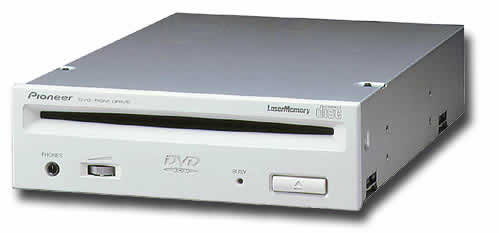I've got an O300 in a rack in the lab at work. We don't have a dedicated server room and the noise level was driving people crazy. So I decided to replace the fans. The original chassis fans are NMB Minebea 3110KL-04W-B79 and run at a fixed speed of > 4000 RPM. Sound pressure is 40dB a piece. There are four chassis fans plus one in the PSU.
The problem is that the L1 has a lower warning limit of 2160RPM, and most silent fans are below that. I opted for Scythe / NMB 3110KL-04W-B39-E51 fans running at 2700RPM (28dB a piece): http://www.scythe-usa.com/product/acc/0 ... etail.html
Replacing the chassis fans was easy, the PSU fan was more of a problem because the entire thing had to be disassembled. Inside was a crappy delta fan, is was so poorly balanced you could feel the fan shake if you spun it.
Here's what the L1 has to say now:
Success, and much more quiet! Oh, we don't have air conditioning either so this is a normal temperature.
It looks like SGI had the same idea. In Neko's O350 the fans run at 2300 RPM, with the same 2160RPM warning limit.
The problem is that the L1 has a lower warning limit of 2160RPM, and most silent fans are below that. I opted for Scythe / NMB 3110KL-04W-B39-E51 fans running at 2700RPM (28dB a piece): http://www.scythe-usa.com/product/acc/0 ... etail.html
Replacing the chassis fans was easy, the PSU fan was more of a problem because the entire thing had to be disassembled. Inside was a crappy delta fan, is was so poorly balanced you could feel the fan shake if you spun it.
Here's what the L1 has to say now:
Code: Select all
speedo 1# l1cmd env
Environmental monitoring is enabled and running.
Description State Warning Limits Fault Limits Current
-------------- ---------- ----------------- ----------------- -------
12 IO Enabled 10% 10.80/ 13.20 20% 9.60/ 14.40 12.188
12 DIG Enabled 10% 10.80/ 13.20 20% 9.60/ 14.40 12.125
5V Enabled 10% 4.50/ 5.50 20% 4.00/ 6.00 4.966
3.3V Enabled 10% 2.97/ 3.63 20% 2.64/ 3.96 3.337
5V AUX Enabled 10% 4.50/ 5.50 20% 4.00/ 6.00 4.992
3.3V AUX Enabled 10% 2.97/ 3.63 20% 2.64/ 3.96 3.423
2.5V Enabled 10% 2.25/ 2.75 20% 2.00/ 3.00 2.483
VCPU Enabled 10% 1.44/ 1.76 20% 1.28/ 1.92 1.593
1.5V Enabled 10% 1.35/ 1.65 20% 1.20/ 1.80 1.480
Description State Warning RPM Current RPM
--------------- ---------- ----------- -----------
FAN 0 LEFT Enabled 2160 2812
FAN 1 CENTER Enabled 2160 2884
FAN 2 RIGHT Enabled 2160 2766
FAN 3 PS Enabled 2160 2909
FAN 4 PS' Enabled 2160 3096
Advisory Critical Fault Current
Description State Temp Temp Temp Temp
----------------- ---------- --------- --------- --------- ---------
0 NODE 0 Enabled 40C/104F 46C/114F 49C/120F 24C/ 75F
1 NODE 1 Enabled 40C/104F 46C/114F 49C/120F 25C/ 77F
speedo 2#
Success, and much more quiet! Oh, we don't have air conditioning either so this is a normal temperature.
It looks like SGI had the same idea. In Neko's O350 the fans run at 2300 RPM, with the same 2160RPM warning limit.
Now this is a deep dark secret, so everybody keep it quiet

It turns out that when reset, the WD33C93 defaults to a SCSI ID of 0, and it was simpler to leave it that way... -- Dave Olson, in comp.sys.sgi
Currently in commercial service:
 (2x)
(2x)

In the museum : almost every MIPS/IRIX system.
Wanted : GM1 board for Professional Series GT graphics (030-0076-003, 030-0076-004)

It turns out that when reset, the WD33C93 defaults to a SCSI ID of 0, and it was simpler to leave it that way... -- Dave Olson, in comp.sys.sgi
Currently in commercial service:

 (2x)
(2x)

In the museum : almost every MIPS/IRIX system.
Wanted : GM1 board for Professional Series GT graphics (030-0076-003, 030-0076-004)






























 hehe
hehe